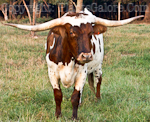 For centuries, animal
manures have been used to help foster the growth of
agricultural crops. Perhaps the most important
aspect of manure is that it adds wonderful
organic
matter to the soil. In terms of actual plant
nutrients, manure products are much lower than most
standard granular products.
For centuries, animal
manures have been used to help foster the growth of
agricultural crops. Perhaps the most important
aspect of manure is that it adds wonderful
organic
matter to the soil. In terms of actual plant
nutrients, manure products are much lower than most
standard granular products.
Listed below are the
major nutrient element content of various types of
livestock manure in either the dry or undried form.
The numbers represent the percentage of each found.
For example, undried i.e. straight from the cow,
cattle manure would have an analysis of 0.5-0.3-0.5
if it were sold as a bag of fertilizer. In 100
pounds, there would only be 1/2 pound of nitrogen,
3/10 of a pound of phosphorus and 1/2 pound of
potassium.



